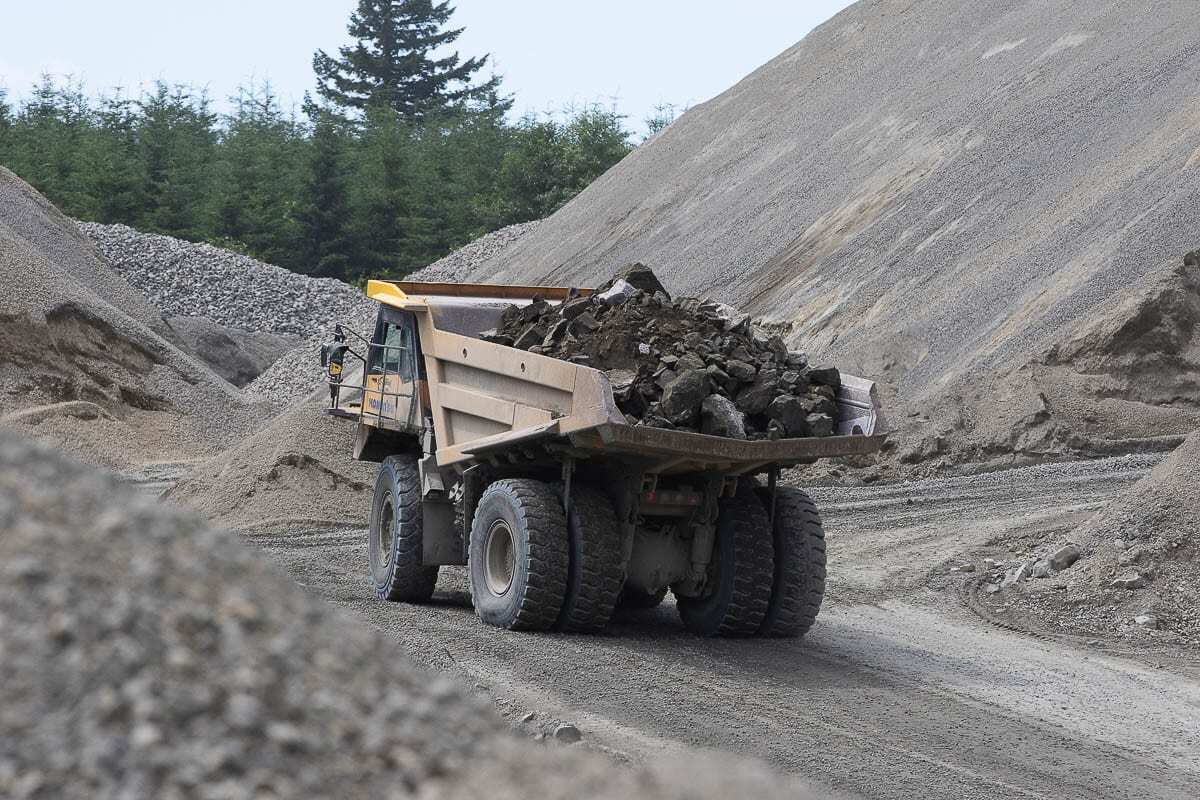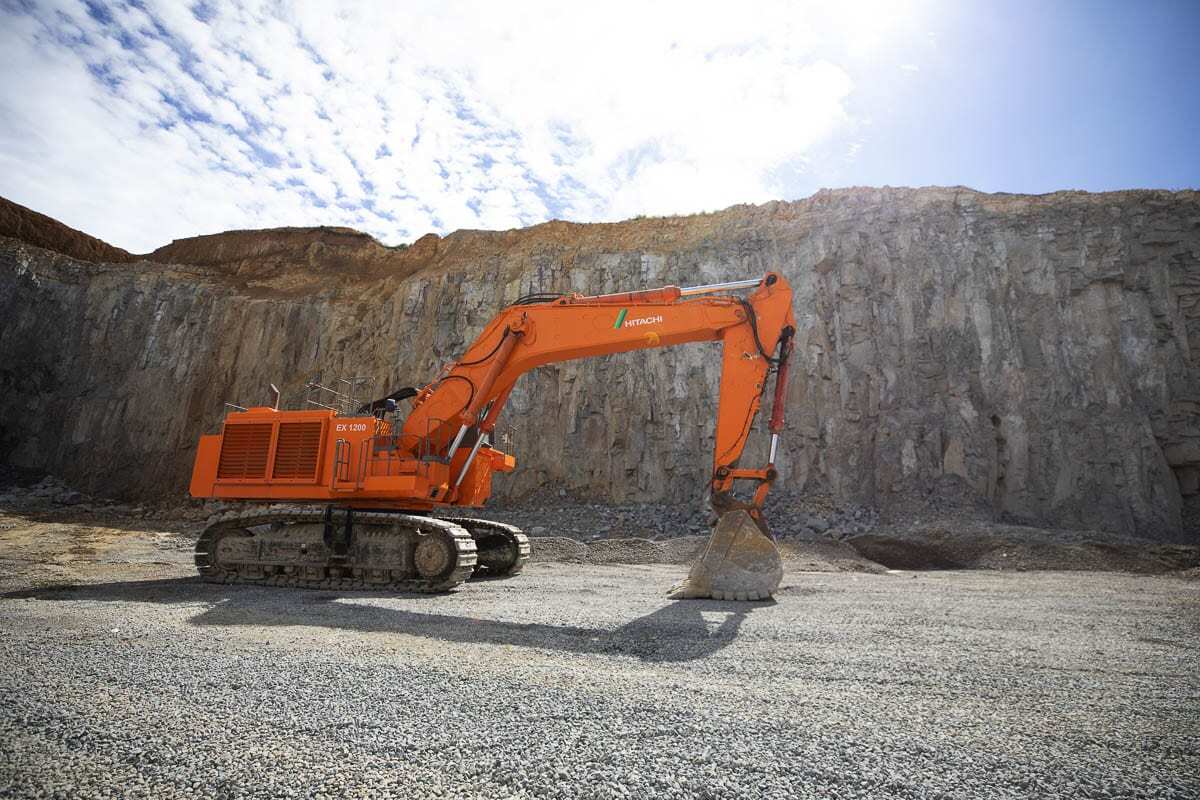Industry fears greater shortage of rock; mine neighbors frustrated by no public input
CLARK COUNTY — Members of the Clark County Council held a special work session via phone this week to hear from representatives of the surface mining and construction industry.
With the help of nonprofit Identity Clark County and county staff, the councilors heard from eight speakers working as quarry operators, builders, contractors or association heads. County Manager Kathleen Otto explained at the start that the session was intended to be an industry overview of aggregate in general, not a focused conversation on any one mine.

Nevertheless, the session was met with pushback from a few residents living near rock pits in the county, frustrated with the lack of public comment or community input during the discussion.
“This is an educational opportunity for the council to learn as much as we can about the aggregate industry,” said Council Chair Eileen Quiring O’Brien. “These folks are actually part of our constituency, too. So I want to thank you for being involved, I want to thank you for providing jobs in this community and thank you for the information that we are about to receive.”
The central concern presented by speakers was the shrinking number of Clark County aggregate sources, and potential coming rock shortage.
Chrissy Lyons, the president of the Southwest Washington Contractors Association, spoke to the collective concern, highlighting a letter sent to council and signed by 290 area stakeholders and endorsed by Identity Clark County, the Building Industry Association (BIA) of Clark County, the Northwest Utility Contractors Association (NUCA), and the Clark County Association of Realtors.
“Our rock quarries and pits are being depleted rapidly and are constrained by trip counts and other arbitrary controls,” Lyons said. “We need the ability to investigate all potential properties in the Surface Mining Overlay, and to develop the availability of rock reserves and create a streamlined pathway for the mining operators to access these resources, while also ensuring protection for the residents and our environment.”
Representatives from the BIA of Washington and NUCA spoke to the rising effects of less local options for rock on housing markets and transportation infrastructure, like roads. In essence, builders trucks are now most often traveling from the job site to northern pits, like Yacolt Mountain Quarry. This has, in some cases, doubled the cost per truck load and required builders to buy more trucks to obtain their needed supply.
Ryan McDonald, the president of NUCA, gave the example of how much aggregate goes into one mile of average roadway. Thousands of tons of rock are required to form the roads foundation and asphalt, he said. The curbs and stormwater system account for additional thousands of tons. In the end, the average one mile of road requires 75,000 tons of rock, he said.
“In our industry, transportation of materials is one of, if not the top expense we have because moving 105,000 pounds of material down the road burns a lot of fuel,” McDonald said. “Each dump truck you see traveling on the road is burning about seven gallons of fuel per hour. Subsequently, since our main source is now in one corner of the county, to get rock south of SR-500 and east to 205, it’s almost a three hour round trip. So that’s tripled for us.”
McDondald also mentioned that the additional trucking can exacerbate the leading cause of complaints, which is truck noise and volume. It also increases the carbon footprint of the industry in Clark County, he said. He pointed to the Growth Management Act (GMA) as the solution for the lack of new mines.
Alison Moss, a land use attorney who has worked with the GMA since its adoption in 1990, spoke next, on possible changes in the way the county currently navigates the conditions outlined in the GMA.
The major issue she outlines is that the GMA required all counties to designate areas for surface mining, among other land uses, by 1991. There were two ways they could go about doing this; the first is to actually map out their entire county, the second is to evaluate sites on a case-by-case basis as private landowners submit requests. Clark County chose the latter.
“Incremental designation leads to increased land-use conflicts as adjacent property owners are not aware of the designation prior to purchasing or developing their lands,” Moss said. “It can lead to the permanent loss of aggregate due to incompatible use conflicts and even developing over the resources. The Department of Commerce … recommends that local governments identify and designate all commercially significant mineral deposits as part of their periodic reviews of their comprehensive plans.”
According to information from the Washington Department of Natural Resources and the evaluation of NV5 geologist Eric Staley, Clark County has anywhere from seven to 21 years supply of rock left in existing mines. This timeframe has been contested by members of the public in recent years, but stands as the main estimation range.
Looking at a potential 7 percent growth of population in the next few years, Staley explained that this timeline could be problematic if new sites for the mining of aggregate were not permitted.

To that end, Bo Storedahl a representative of JL Storedahl & Sons which operates Yacolt Mountain Quarry, Livingston Mountain Quarry, and the Daybreak pit, elaborated on what he said were difficulties faced by seekers of new permits, and existing issues with trucking regulations.
Trucking is currently prohibited on all legal holidays at his mines, which he argues is inconsistent with the reality that the industry does not take those days off. He also alluded to the difficulties he has faced in the permitting process after purchasing an additional parcel of land at Yacolt Mountain Quarry for the storage of overburden and for mining after a set number of years.
“I’m hopeful that we can find a way to examine the process itself,” Storedahl said. “I think everybody here is advocating for the same thing, and that’s a process that seems not only achievable, but worthwhile to pursue. I think going into any process, you look at … monetarily what that’s going to cost and unfortunately with the unknowns in this process, it’s discouraging for somebody to pursue an aggregate resource in Clark County, and I hope we can aim to change that.”
Following Storedahl, the speakers concluded with Brent Rotschy of Rotschy, Inc. and Kevin Tapani of Tapani, Inc. Both echoed each other on the concern of younger generations moving away from the area due to rising home costs caused, in part, by rock availability.
“One of my main worries is that my kids are being attracted to other more affordable places to live. They’re going to take my grandkids with them,” Rotschy said. “We all know young families especially are the future of that county, and they’re really the backbone of the construction industry.”
The council chair mentioned calling upon speakers individually to answer later questions, but a future work session or meeting date was not set. No mention of complaints from residents on time for public comment was made, and the Surface Mining Advisory Committee (SMAC) has not resumed meetings.




